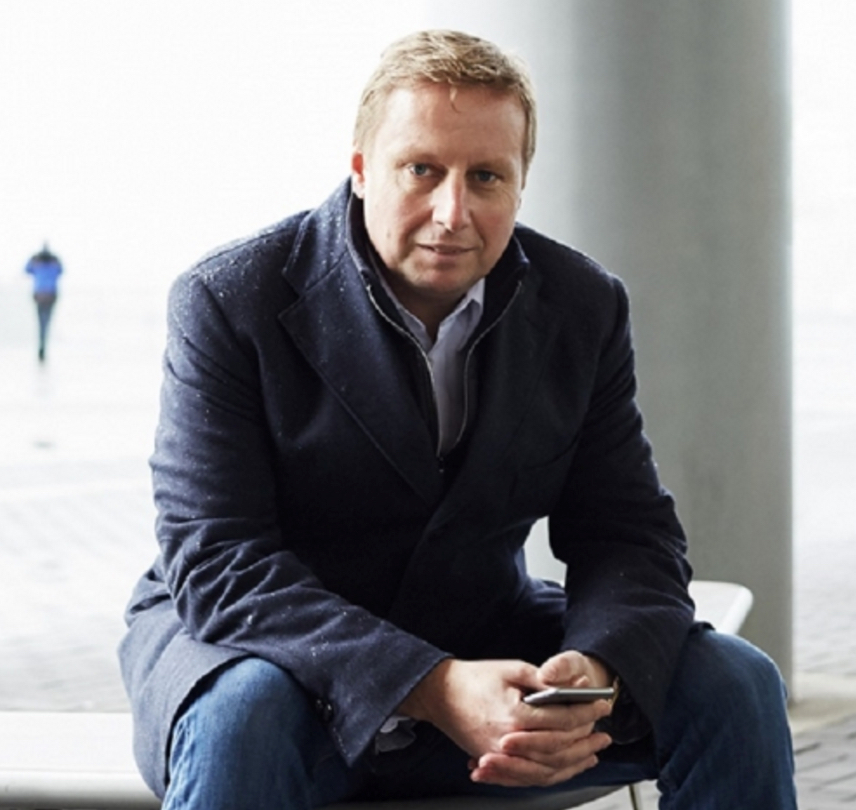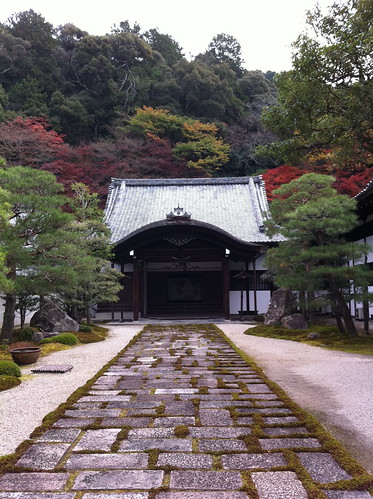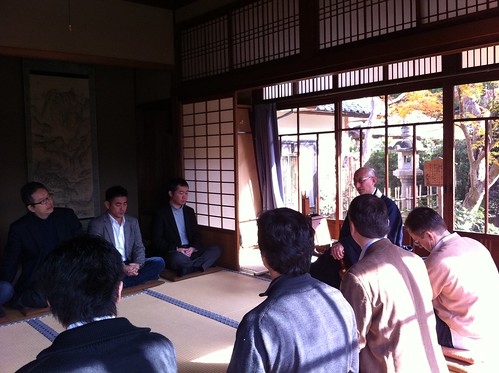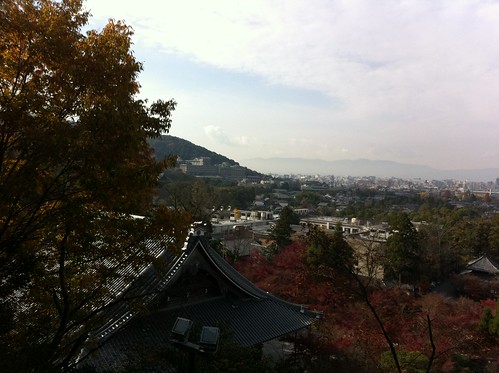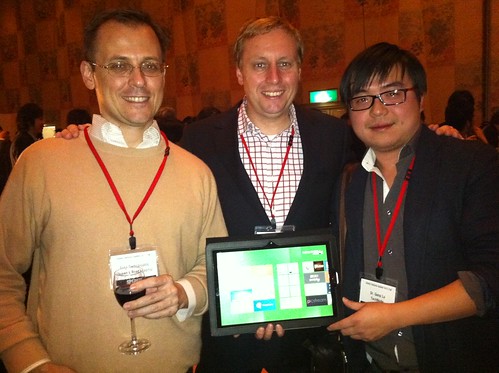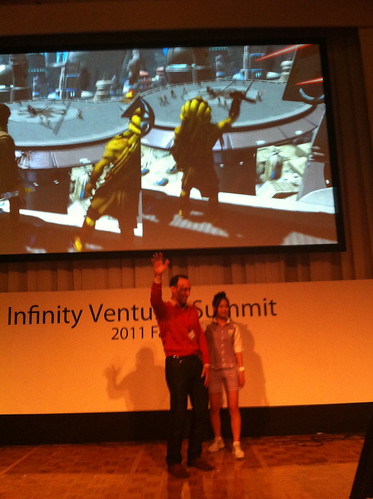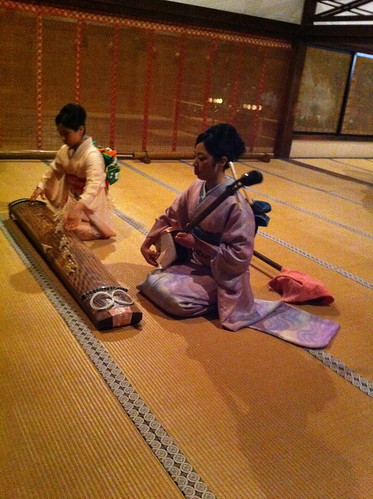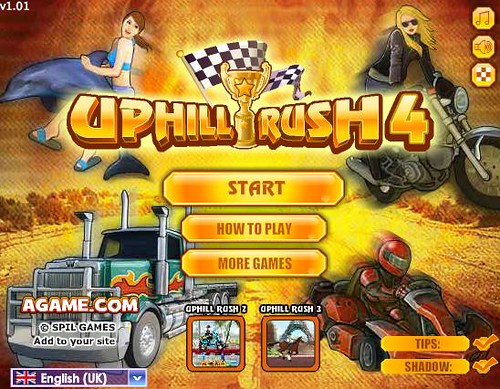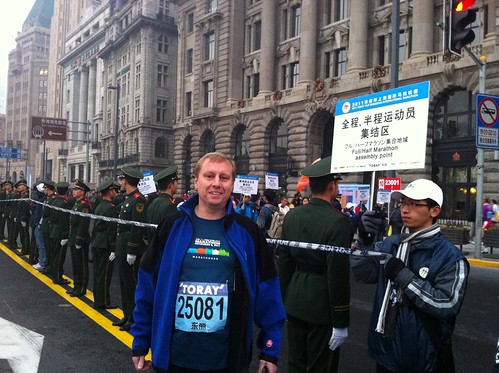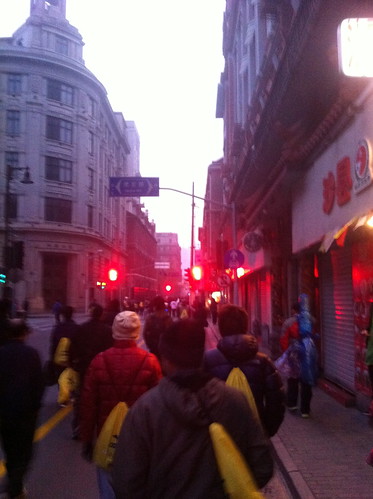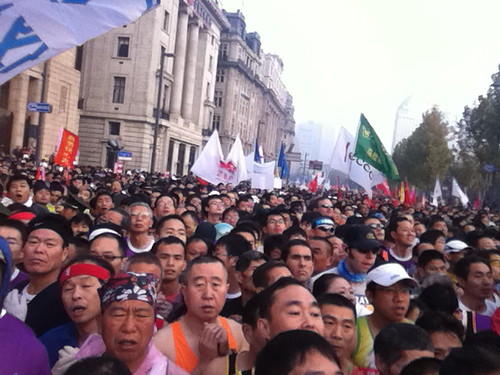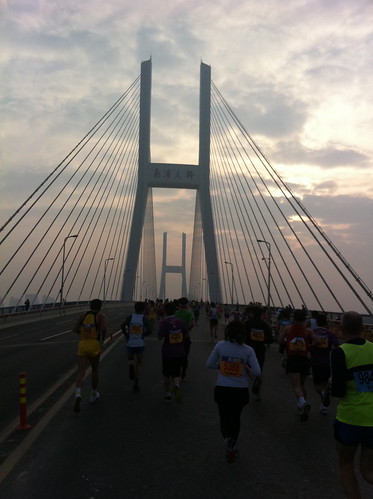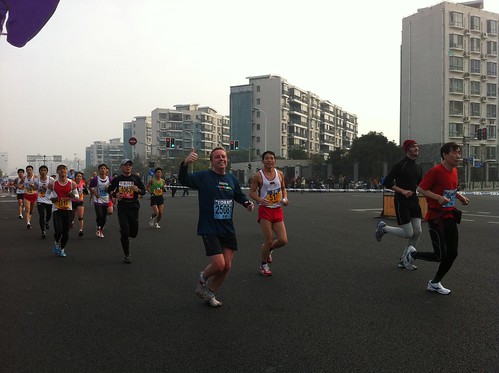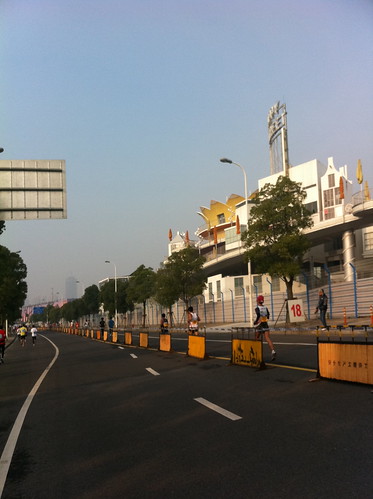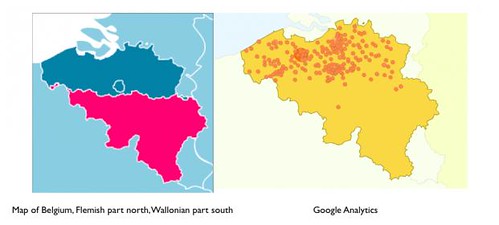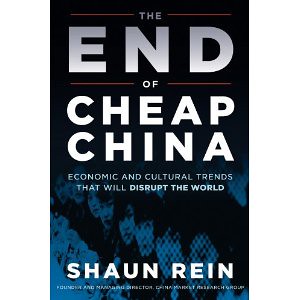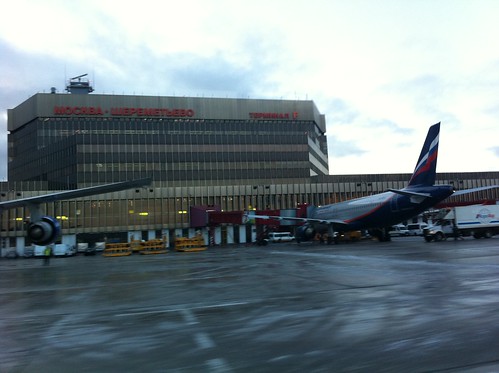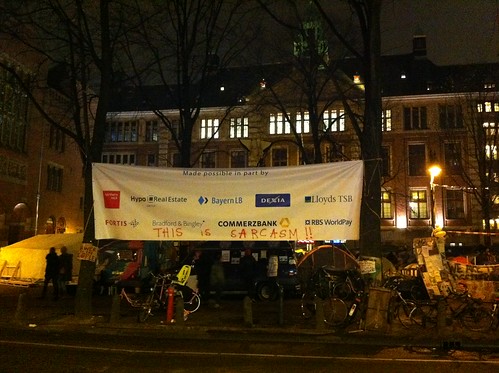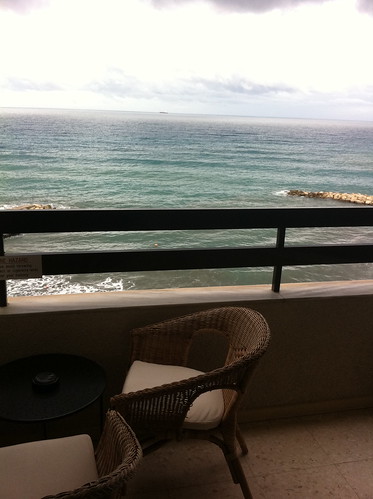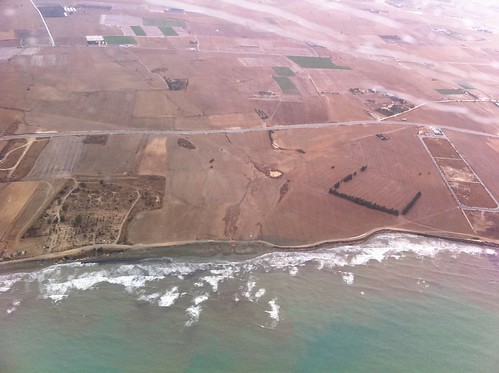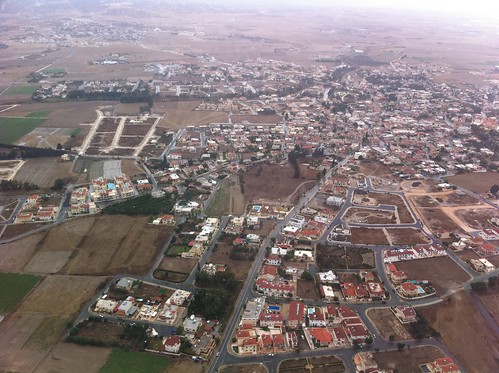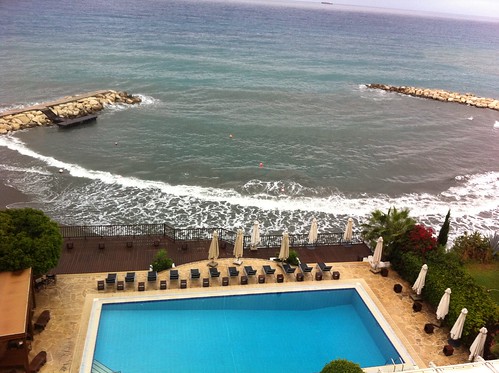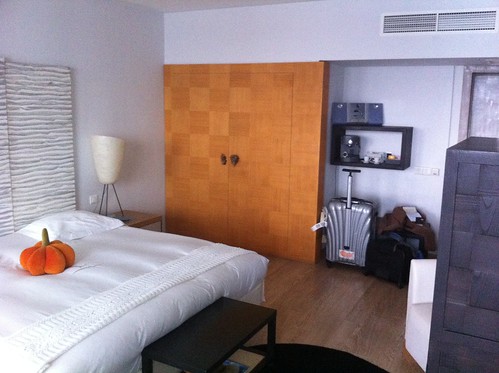Last week I was invited to speak at the Infinity Ventures Summit 2011 in Kyoto, Japan. It was an excellent conference and I learned a lot about Internet and investing in Japan. Because it is an invitation-only conference the level of participants is quite high, with lots of CEOs and founders of (mainly Japanese) Internet tech companies. The conference was held at the Westin Miyako in Kyoto, an excellent 5-star hotel close to many of Kyoto’s temple complexes.
Although I spent most of the time at the conference I managed to see a bit of Kyoto as well. It was my first trip to this city and people had told me that it would be an amazing experience. And they were right, I am very impressed with what I saw here. The city is surrounded by low mountains covered with dense forests and on the foot of these hills there are a large number of temple complexes. Also in the city itself you see a lot of shrines and temples, it is as if you are going back in time.
I arrived around 9:30 PM on the first night, so I had no idea where I was exactly. I had to work on a presentation in my hotel room, so that’s what I did at first, but around midnight I decided to go for a stroll. The city was deserted, even the coffee shops and bars had closed down for the night. I had planned to eat something at a cafe or so, but that didn’t seem possible around my hotel. Luckily I found a Lawsons where I bought a beer and some snacks. I walked around a bit longer but because the place was deserted and it was pretty cold I decided to get back to my hotel.
I got up early the next morning and watched the sunrise over the mountains from my hotel room (pure coincidence, I opened the curtains just as the sun was coming up). At 8:30 AM Infinity Ventures had invited some of the speakers and guests for a Zazen session in a temple. Not really knowing what it was I decided to join as well. With some other guests we shared a taxi to the temple, only to end up at a different temple complex! It could have been China… We didn’t realize this right away so walked around a bit and took some pictures. Luckily we had a Japanese lady in our taxi (who later turned out to be the CEO of a Japanese e-fashion company) who was able to get directions to the right temple, so with a 20 min delay we arrived at the Zen session.
Basically we had to meditate on the floor of the temple while trying not to think of anything, for 2 times 15 minutes. A priest first told us a story and explained how it worked (luckily with an English translation) and then we got started. I tried as hard as I could to sit comfortably and relax, but it was difficult. I couldn’t keep my mind from wandering off with all kinds of new ideas or things I had to work on, but I eventually managed to relax. Suddenly the priest rang a small bell and I realized where I was. Kind of a strange experience.
After 15 min we could relax our legs a bit and then the second session started. My legs were stiff and hurting and I could hardly sit anymore. During the second session you could request the priest to hit you twice with a wooden stick on your shoulders. I sort of missed the significance of that and decided not to do it. It was interesting to hear the sound of the others being hit though, it seemed like they were hit quite hard.
At the same time my body started protesting because of me sitting a long time in such a ‘strange’ position. My legs started trembling and I started sweating as if it was very hot in the room. I was relieved when the priest rang the bell and announced that the session was over. I guess I am not used to this kind of traditions, but it’s something I’d like to try again. I will train my legs a bit first though, because the next day I had serious muscle ache from sitting down in a semi lotus position for half an hour!
After the zazen session we visited another nearby temple complex with a nice view over Kyoto. I was talking to a lot of IVS participants so didn’t see a lot of the temples, but I realized how peaceful and quiet it was everywhere. I enjoyed being there in the complex, very different from the hectic daily life in Shanghai.
We then walked back to the hotel for the official start of the conference. We had an excellent lunch and then the presentations started, all with good simultaneous Japanes-English and English-Japanese translations. The China gang (Fritz Demopoulos, Richard Robinson, Gang Lu, Rekoo’s Patrick Liu and myself – we seem to meet at different conferences around the world) had their session that afternoon as well.
After our presentation and discussion I watched a couple of more sessions and then spent an hour in my hotel room to catch up on emails. That’s always the curse when you are away from the office, emails keep piling up. I normally try to spend 2 hours in the morning and 2 hours at night to answer emails when on a business trip, but it’s just not enough. Starting the day at 6 AM with 100-150 new emails is not fun, but it seems there is no way around it…
At dinner (excellent Japanese food, actually I only had great food at the conference) some of the sponsors showed off their upcoming gadgets and games. Among others the Kinect Star Wars game was on display (Richard Robinson loved it!) and we got to try out the Windows 8 table (not a bad product, but more of a laptop replacement than an iPad competitor).
After dinner we were invited for a VIP party in one of the bars of the hotel. Among others I tried out a Kyojito – not something I recommend, sake is not a good replacement in a Mojito. The wines were good though and I had some nice conversations with among others Peng Ong and KKBOX’s Chris Lin.
The next morning I could hardly get up. Not because of the drinks but because my legs were hurting so much from the Zazen session! After breakfast I watched Launch, a start-up pitch competiton for Japanese companies. I didn’t spot anything outstanding, but it was fun to look at the products and ideas (most were apps) being presented on stage. The rest of the day I spent either in sessions or in my hotel room working on emails and calls.
Around 4 pm I decided to quickly go out and see a bit more of Kyoto before it would get dark. I made a 1.5 hour walk from the hotel through some backstreets to the Heian temple and from there to the river. It was very quiet on the streets and even at the Heian complex there seemed to be just a few people.
Also along the river I hardly saw anybody. Not sure if this is because the time of year, the time of day, or if there are just not a lot of tourists in Japan anymore after the earthquake (the 3/11 event still plays a major role in conversations by the way, it was brought up several times during the conference). When it was almost completely dark I walked back to my hotel, spent some time on Facebook and Twitter and then changed for dinner.
Dinner was quite an event, because it was held in a temple close to the hotel. The temple complex was beautifully lit, it was literally amazing. I tried to capture it, but with my iPhone camera that was not easy. We made a walk through the gardens and then had drinks and dinner in two of the temple’s halls. I am not easily impressed but this dinner location really made a deep impression on me. It makes you realize that there is more than just working hard day and night.
I didn’t stay too long because I was tired after the two long days. I made another stroll through the gardens before walking back to the hotel. There I spent another hour on emails and skype, and uploaded some pictures on Flickr. Then I went to bed early instead of going for another drinking session in the bar, I felt I needed some rest.
Friday morning I started with 2 hours on email, then I had a big breakfast in the hotel (Japanese & international buffet, not bad). I took me 5 minutes to pack my hand luggage and then I took a cab to the bus station. There I took the express bus to Osaka Kansai airport and from there I took the plane back to Shanghai. I look back on 3 nice days in Kyoto, a city I should spend some more time in in the future.
